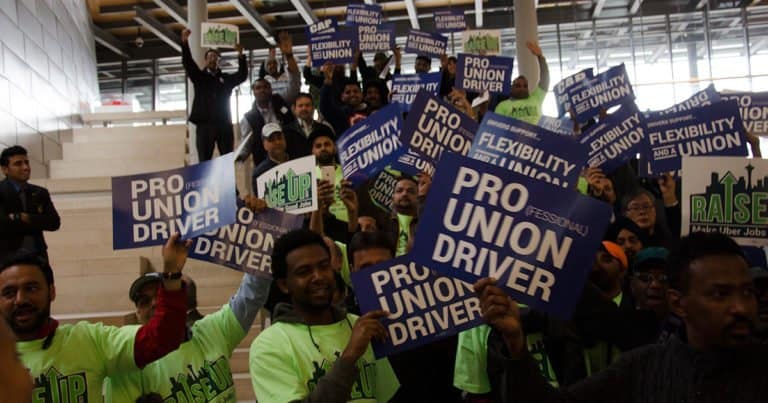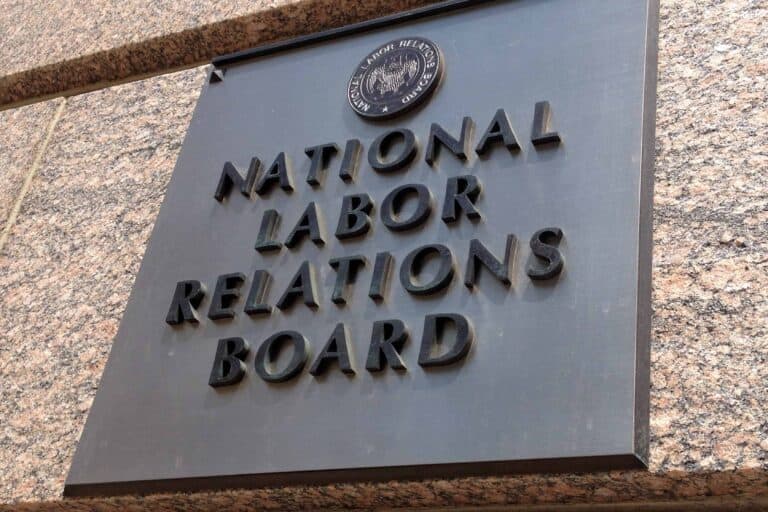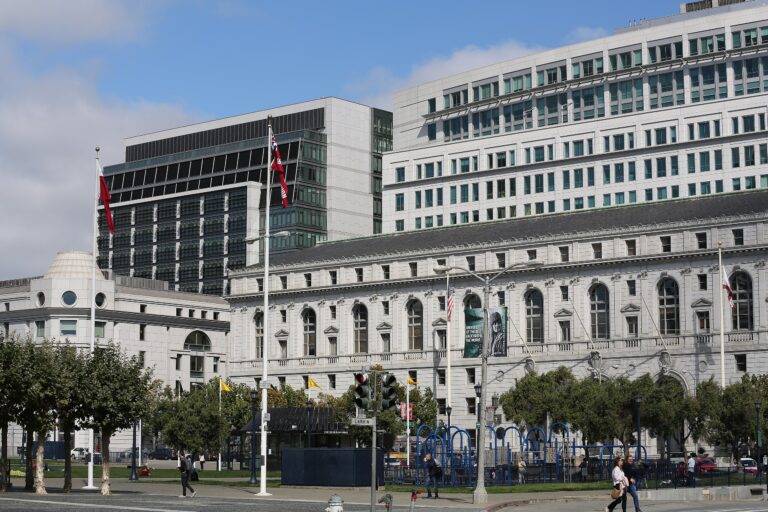
Rachel Sandalow-Ash is a student at Harvard Law School and a member of the Labor and Employment Lab.
The Trump Administration’s Office of Personnel Management has proposed a new rule that would enable federal workers to drop their union membership at any time after their first year. As Heather Gies explains for In These Times, “A rolling opt-out rule would mark a break from current practice, in which workers can revoke their membership at yearly intervals upon their anniversary of joining.” Kate Bronfenbrenner, director of labor education research at Cornell’s School of Industrial and Labor Relations, explained that this policy would enable executive branch appointees to “intimidate and coerce workers” into dropping out of their unions, or to scare them out of joining unions in the first place. Federal workers and unions strongly oppose the proposed rule. J. David Cox, the president of the American Federation of Government Employees (AFGE), said that the Trump Administration’s “ultimate goal is to destroy federal sector unions, and we will do everything in our ability to prevent that from happening.” Currently, 1.1 million federal workers are represented by unions. As Jared explained for OnLabor last week, federal workers also suffered a recent blow when the D.C. Circuit, reversing last year’s district court ruling, upheld large portions of President Trump’s executive orders aimed at curtailing federal workers’ union rights.
Last month, Vietnam ratified the International Labour Organization’s (ILO) Convention 98 on collective bargaining, which “allows for workers to be protected against anti-union discrimination, and for workers’ and employers’ organizations to operate without interference from each other.” Joe Buckley, who researches labor relations in Vietnam, writes in Jacobin about how Vietnamese workers will, for the first time, be able to form true labor unions, rather than company-dominated organizations. By 2023, Vietnam also plans to ratify Convention 87, which will allow workers to establish and join unions that are independent of the governing Communist Party. Currently, the state-led Vietnam General Confederation of Labour (VGCL) is the only legal union in Vietnam. In the absence of independent labor unions, Vietnamese workers have engaged in hundreds of wildcat strikes each year. By striking, Vietnamese workers have secured wage increases and improved working conditions, and they have successfully pressured the government to reverse an unpopular change to the country’s social security law.
Journalist Emily Guendelsberger worked as a as a temp warehouse “picker” at an Amazon warehouse, as a register clerk at a McDonald’s, and a call center rep “fielding customer complaints for a third-party employer.” She then wrote about her experiences in a new book entitled On the Clock: What Low-Wage Work Did to Me and How It Drives America Insane. In Vox, Guendelsberger explains how employers like McDonalds use algorithmic scheduling to schedule workers for back-to-back closing and opening shifts (which prevents workers from getting a full night’s sleep); to keep workers on call, wondering if and when they will be called into work; and to purposefully under-staff shifts, which leads to high rates of workplace injuries. In Time Magazine, Guendelsberger writes about how Amazon uses technological surveillance to force workers to fill orders at a breakneck speed, “squeezing every ounce of downtime out of workers’ days.” As Vail explained for OnLabor last week, Amazon workers in “Minnesota, Germany, and beyond” went on strike on “Prime Day” to protest the company’s low wages, abusive working conditions, and contracts with ICE.
Since the 1990s, three-quarters of U.S. industries have become more concentrated. Wenting Ma, an Assistant Professor of Finance at UMass Amherst, conducted research demonstrating that this industry concentration has decreased wages for workers outside the financial sector due to the labor-market monopsony effect. Specifically, Professor Ma writes “industry concentration increases firms’ market power in the labor market. As workers have fewer possible employers in a more concentrated market, firms possess more bargaining power and so are able to pay less.” However, Professor Ma also explains that in the financial sector, industry concentration has generally led to higher worker pay. Increased concentration has enabled financial firms to “extract [higher] rents from their product markets,” and the firms have shared some of these higher rents with workers — particularly high-paid financial workers such as traders.






Daily News & Commentary
Start your day with our roundup of the latest labor developments. See all
October 13
Texas hotel workers ratify a contract; Pope Leo visits labor leaders; Kaiser lays off over two hundred workers.
October 12
The Trump Administration fires thousands of federal workers; AFGE files a supplemental motion to pause the Administration’s mass firings; Democratic legislators harden their resolve during the government shutdown.
October 10
California bans algorithmic price-fixing; New York City Council passes pay transparency bills; and FEMA questions staff who signed a whistleblowing letter.
October 9
Equity and the Broadway League resume talks amid a looming strike; federal judge lets alcoholism ADA suit proceed; Philadelphia agrees to pay $40,000 to resolve a First Amendment retaliation case.
October 8
In today’s news and commentary, the Trump administration threatens no back pay for furloughed federal workers; the Second Circuit denies a request from the NFL for an en banc review in the Brian Flores case; and Governor Gavin Newsom signs an agreement to create a pathway for unionization for Uber and Lyft drivers.
October 7
The Supreme Court kicks off its latest term, granting and declining certiorari in several labor-related cases.